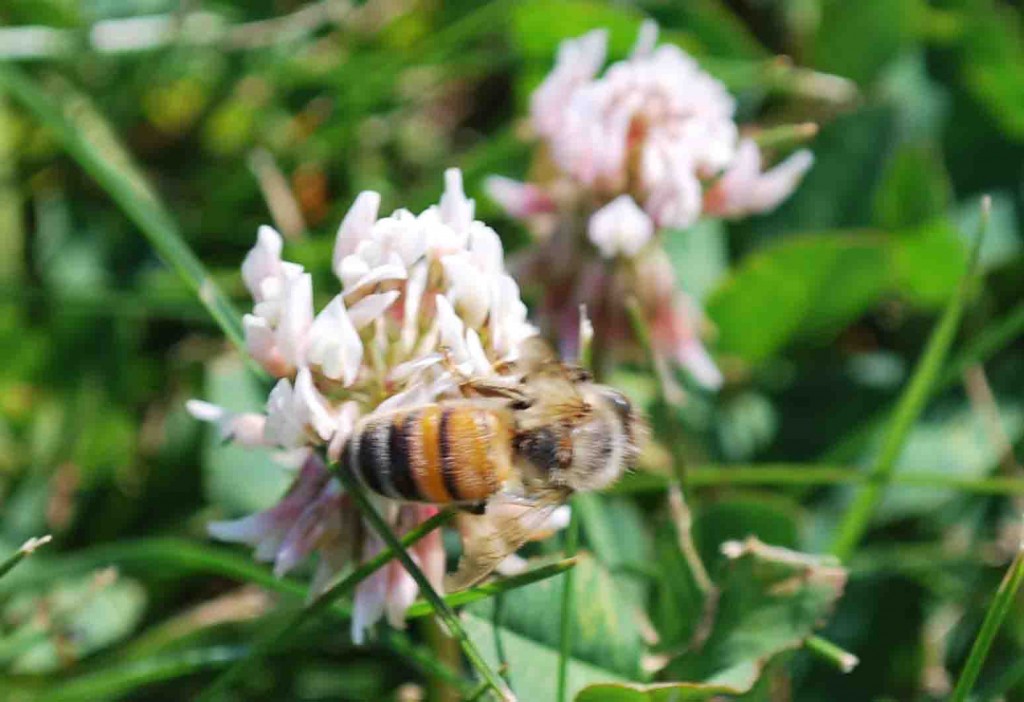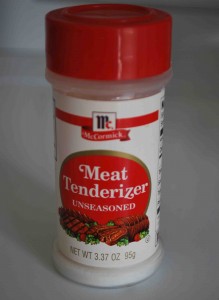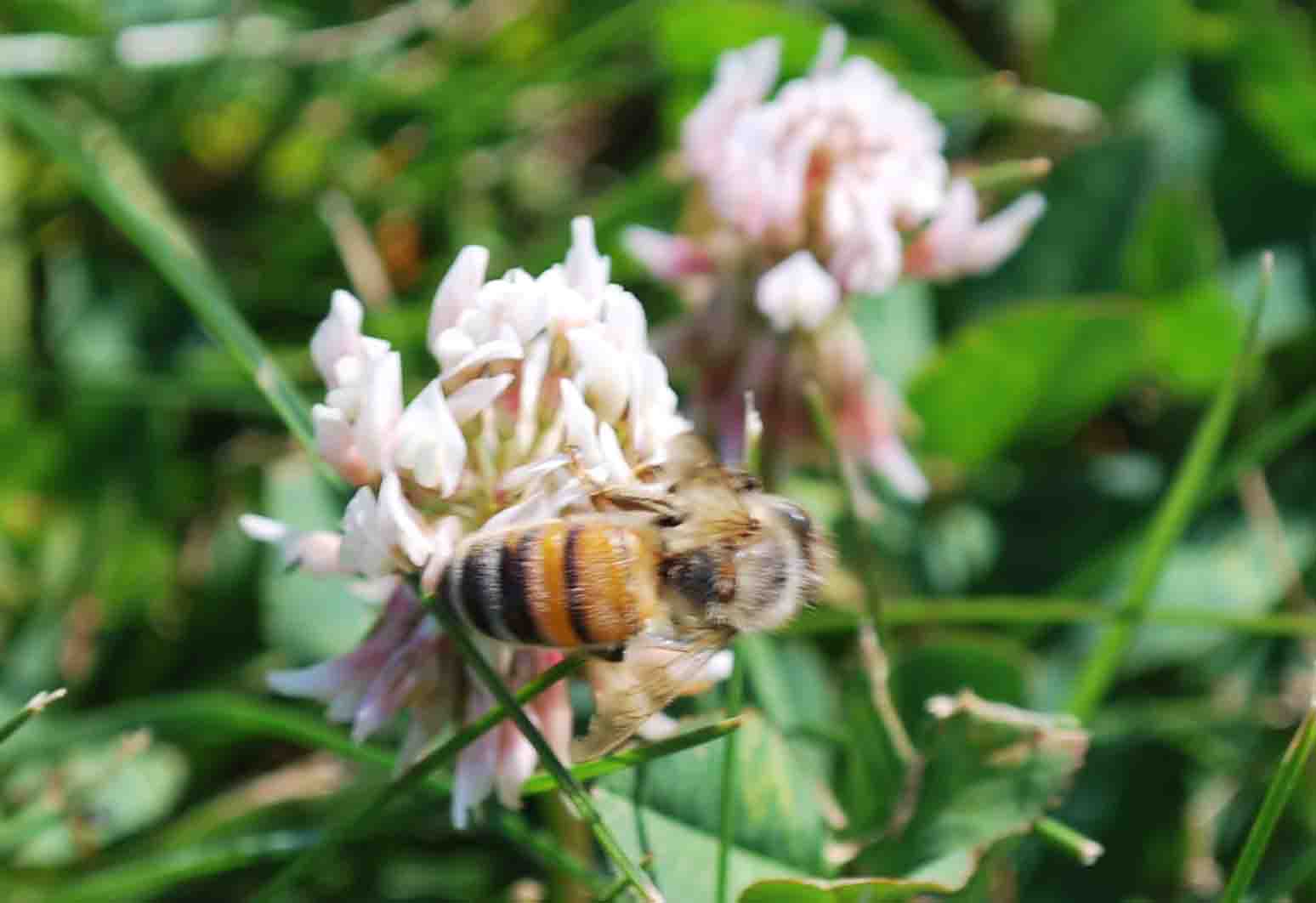 As an avid gardener, I place great value in all the little pollinators flying about my yard. I love when they flit from plant to plant, gathering nectar. Even better, they’re pollinating my plants so I can enjoy a bountiful harvest.
As an avid gardener, I place great value in all the little pollinators flying about my yard. I love when they flit from plant to plant, gathering nectar. Even better, they’re pollinating my plants so I can enjoy a bountiful harvest.
We seem to have an abundance of pollinators, like bees, this year, probably because we’ve chosen 1) not to mow every inch of our 5-acre yard, leaving lots of wild plants waving high in the breeze (much to our neighbors’ frustration, I’m sure!) and 2) not to spray any chemicals on the parts of the lawn we do mow.
 This means we have tons of clover to attract the honey bees in the neighborhood. While I’m happy to help out the bee colonies in the area, I’m not so happy about their stingers.
This means we have tons of clover to attract the honey bees in the neighborhood. While I’m happy to help out the bee colonies in the area, I’m not so happy about their stingers.
So far this year, everyone but the middle child in our family has been stung at least once. That’s why I like to keep this bottle of meat tenderizer in the kitchen cabinet. The theory behind this home remedy is that bee venom injected in the skin contains protein, and meat tenderizer breaks down the protein, relieving pain and swelling.
How to treat a bee sting:
- Remove the stinger. When a bee stings you, it leaves its stinger behind. You need to get the stinger out as soon as possible to minimize the pain and swelling associated with the sting.
- Make a paste of meat tenderizer and water. (Use about one Tablespoon of meat tenderizer with a drop of water.)
- Apply the paste to the bee sting and surrounding area. (If you don’t want to mess with the paste, I have also experienced success with wetting down the affected area and pouring the meat tenderizer over the damp skin.)
- Cover the area with a damp cloth, then apply ice to help prevent swelling. (I use a bag of frozen peas.)
Note: If you know you are prone to a strong reaction to bee stings, I also recommend taking Benadryl right away. Of course, if the person stung experiences difficulty breathing, shortness of breath, or a rapid heartbeat, seek medical attention immediately.


Thanks, Rob. I guess we’re even, because I’m jealous of your great art table and chairs for your kids. Love the space!
Haha! Sounds good, even it is 😉
Whoa, what a cool remedy! And BTW, I’m very jealous of your 5 acres…someday I hope to have that much 🙂